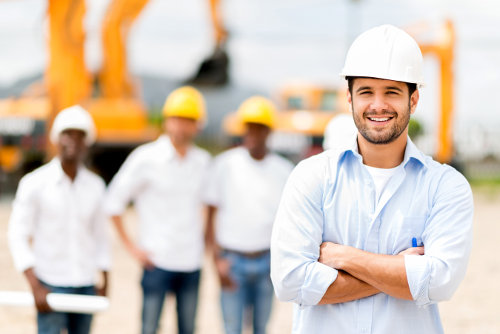Safety and sustainability are two things that small to medium businesses just don’t think about enough.

Being a small to medium business (SMB) is hard work. Markets can be inconsistent, money can be stretched, and the slightest setback can be devastating. For this reason, too many SMBs are not investing enough in safety or sustainability. However, there are several reasons why they should. First of all…
Now is the perfect time for rack inspection training and green initiatives!
If there’s one thing that SMBs always need, it’s security. There are so many question marks in the business world, and what small businesses need is some kind of guarantee. They want stability. They want assurances. Evidently, what they want is safety and sustainability.
When you put it like that, it makes perfect sense. Safety and sustainability are not lofty investments in some higher ideal. They are the structure and sturdiness that so many SMBs crave. Spending money on pallet racking inspection training for your warehouse staff is not extravagant; it’s conservative. It’s a sensible long-term investment that could save you millions in lawsuits, broken equipment, and injured staff.
Similarly, investing in sustainability is a way of ensuring that your business can, well, sustain itself. Finding cheaper and greener energy alternatives to everyday business practices will mean that your business is well placed to tackle the future. For SMBs, now is the perfect time to invest in safety and sustainability. You company is young and it needs the maturity these two ideas bring with it.
Safety and sustainability are linked
What do the four highest polluting US states (by carbon emissions per capita) and the four most dangerous US states (by workplace fatality rate per 100,000 workers) have in common? Everything.
And I mean everything. That is because they are the exact same four states: Alaska, North Dakota, West Virginia, and Wyoming. The lesson from this is that dangerous workplaces are usually unsustainable, and unsustainable workplaces are usually dangerous.
And, sadly, this same correlation plays out over and over again. From the forest fires in Indonesia linked with the unsafe production of palm oil to the warehouse explosions in China caused by a lack of warehouse safety. Furthermore, note that Qatar has both the highest carbon emissions per capita in the world and an abhorrent record of 1,200 workplace fatalities (possibly much more) during the building of the 2022 World Cup stadiums.
If you’re looking for some good news, consider that the reverse is also true. Of the five lowest polluting states by carbon emissions per capita, two of them also have the lowest workplace fatality rate per 100,000 workers (New York and Rhode Island). And the correlation between a safe business model and a sustainable one is even clearer when you think it through.
A small business full of staff with decent safety training is less likely to make mistakes that are costly to the environment or to their health. Making sure that you recycle properly requires diligence, a key skill required for workplace safety. Making sure that your shop floor has the safest possible layout requires long-term thinking, a key skill required for sustainable business. And making sure that dangerous chemicals are stored properly is an area that shows how much the disciplines of safety and sustainability crossover.

It’s the profitable choice
Okay, let’s talk money. OSHA claim that for every $1 businesses spend on safety they can earn $4 – 6. This seems plausible, especially when you consider that American businesses spend $170 billion due to injuries, illnesses, and deaths in the workplace every year.
Turning to sustainability, the English nonprofit CDP claim that businesses which “are actively managing and planning for climate change secure an 18% higher return on investment (ROI) than companies that aren’t – and 67% higher than companies who refuse to disclose their emissions”.
All of this is interesting, but it shouldn’t be surprising. Markets are not just a matter of algebra and calculations. Consumers and investors are people. And people care about the state of our environment and the state of our health. The marketplace is filled with emotions, and small businesses would be wise to tap into those emotions.
It’s the ethical choice
Besides making you more money, a safe and sustainable business is one that you can be proud of. No SMB started out because they wanted to make the world a worse place. Rather, as John Green points out, entrepreneurs are relentlessly hopeful people. Of course, money is a big factor, it always is. Yet the most successful businesspeople are usually those who believe they can change the world for everyone, for the better.
Safety and sustainability make your business something more than a money making machine; it can make it a force for good. Your SMB may not save the world, but acting like it might is a great way to move forward.
Author bio Justin O’Sullivan is a SEMA approved rack inspector based in the UK who provides high-quality rack inspections and pallet racking inspection training in accordance with HSE regulation. He has also written about safety for wide variety of publications in the UK, the US, Canada, and South Africa.


